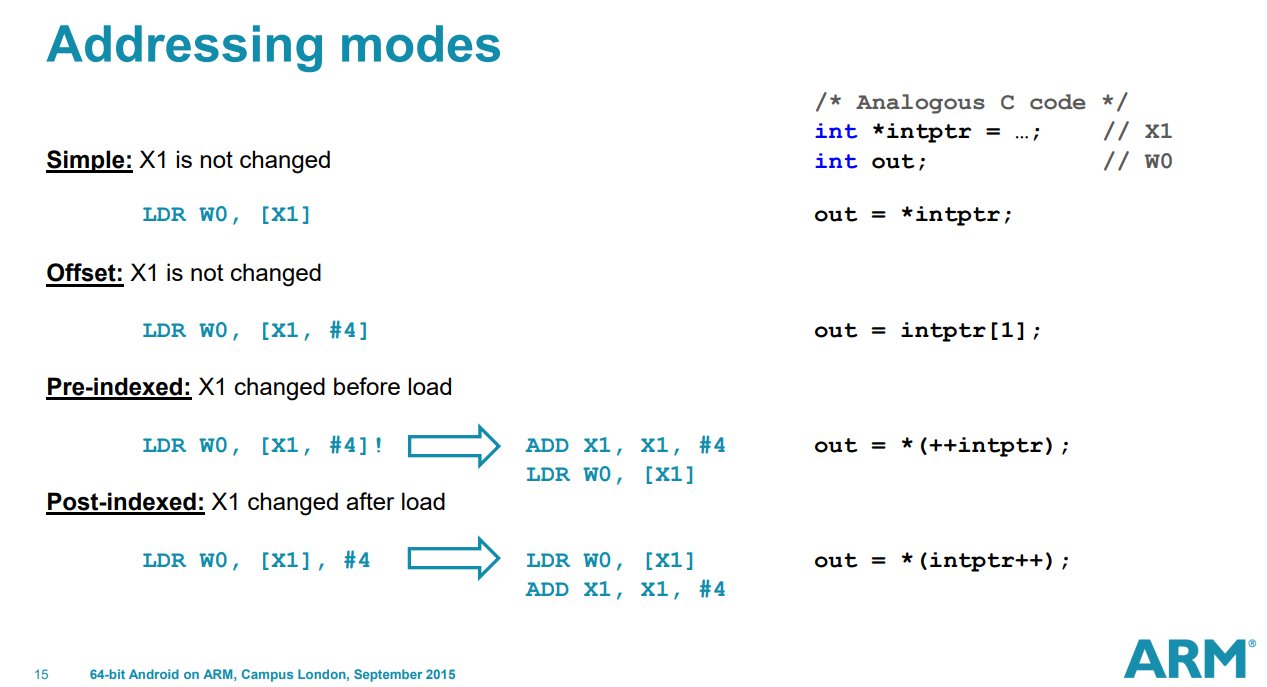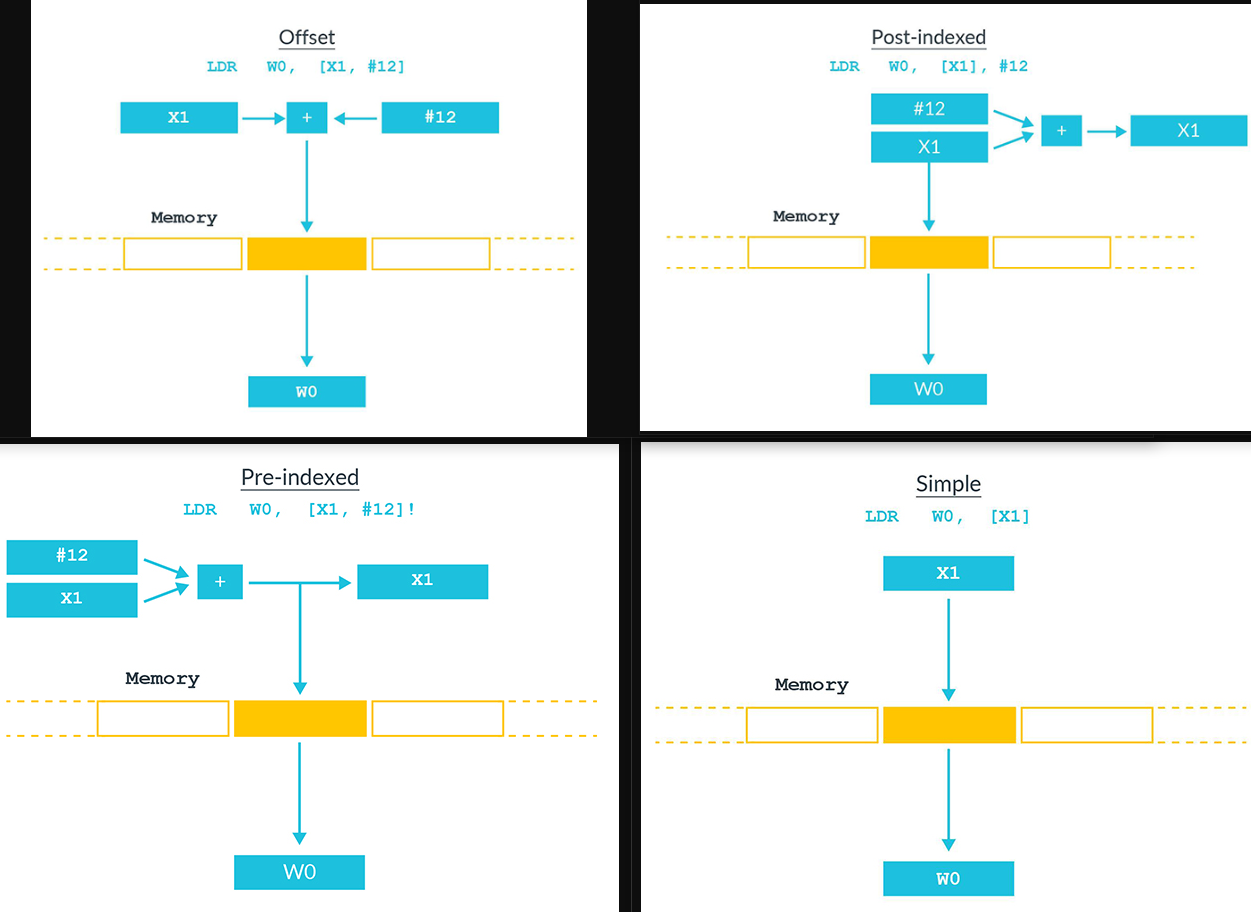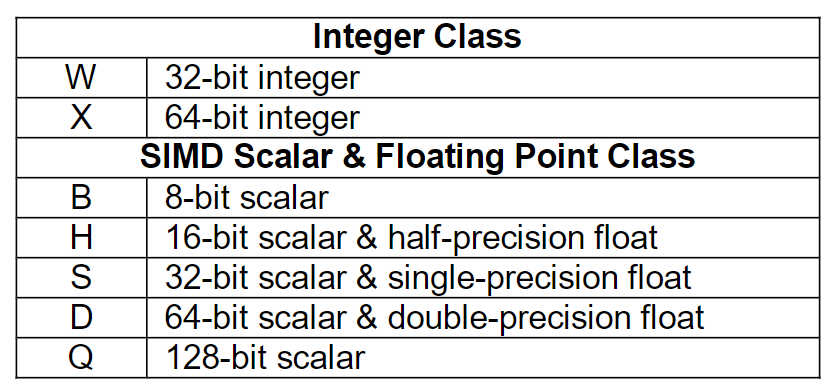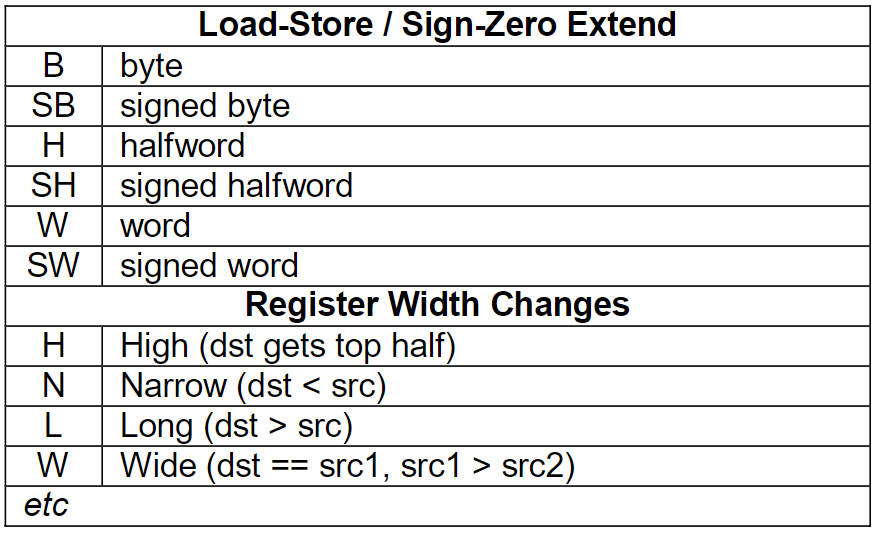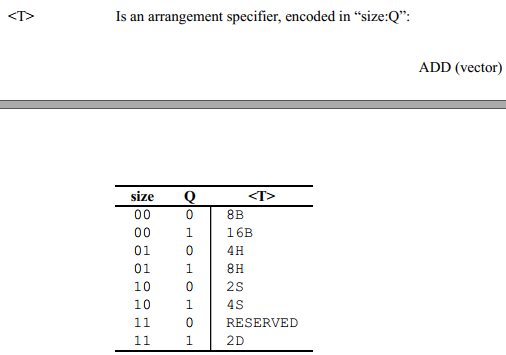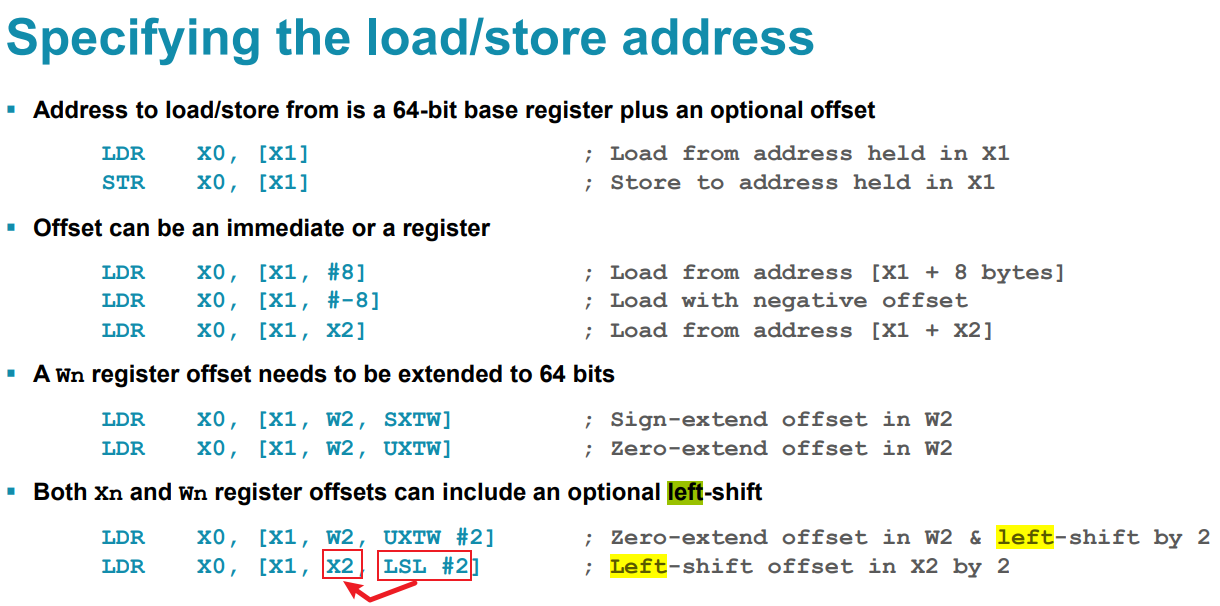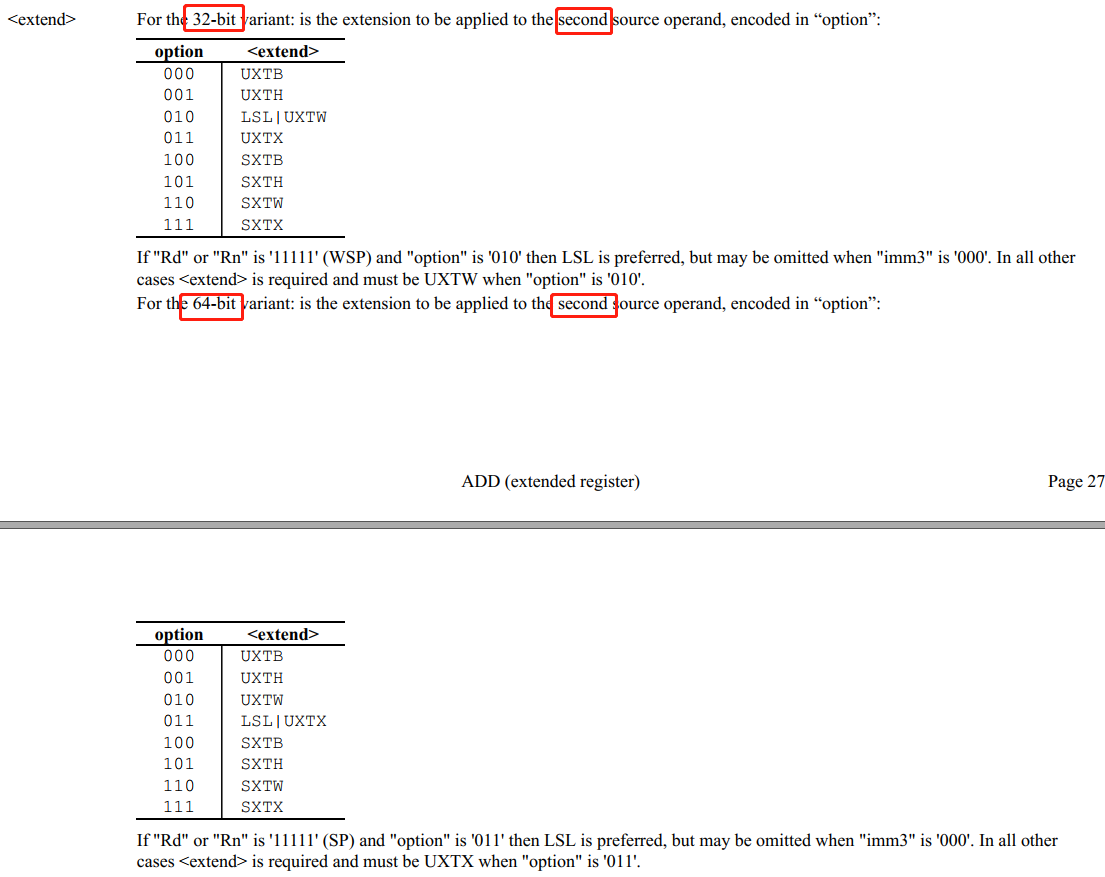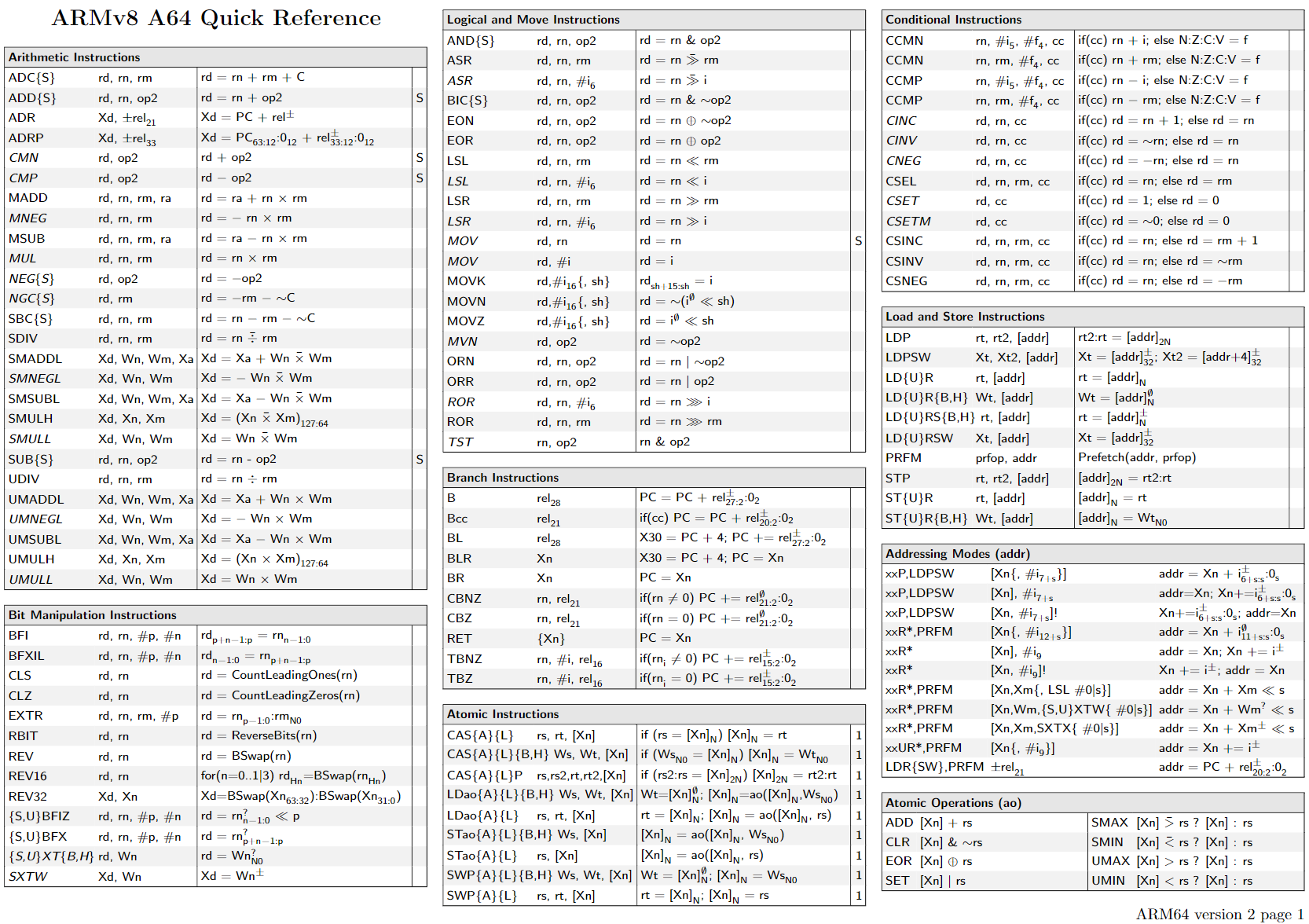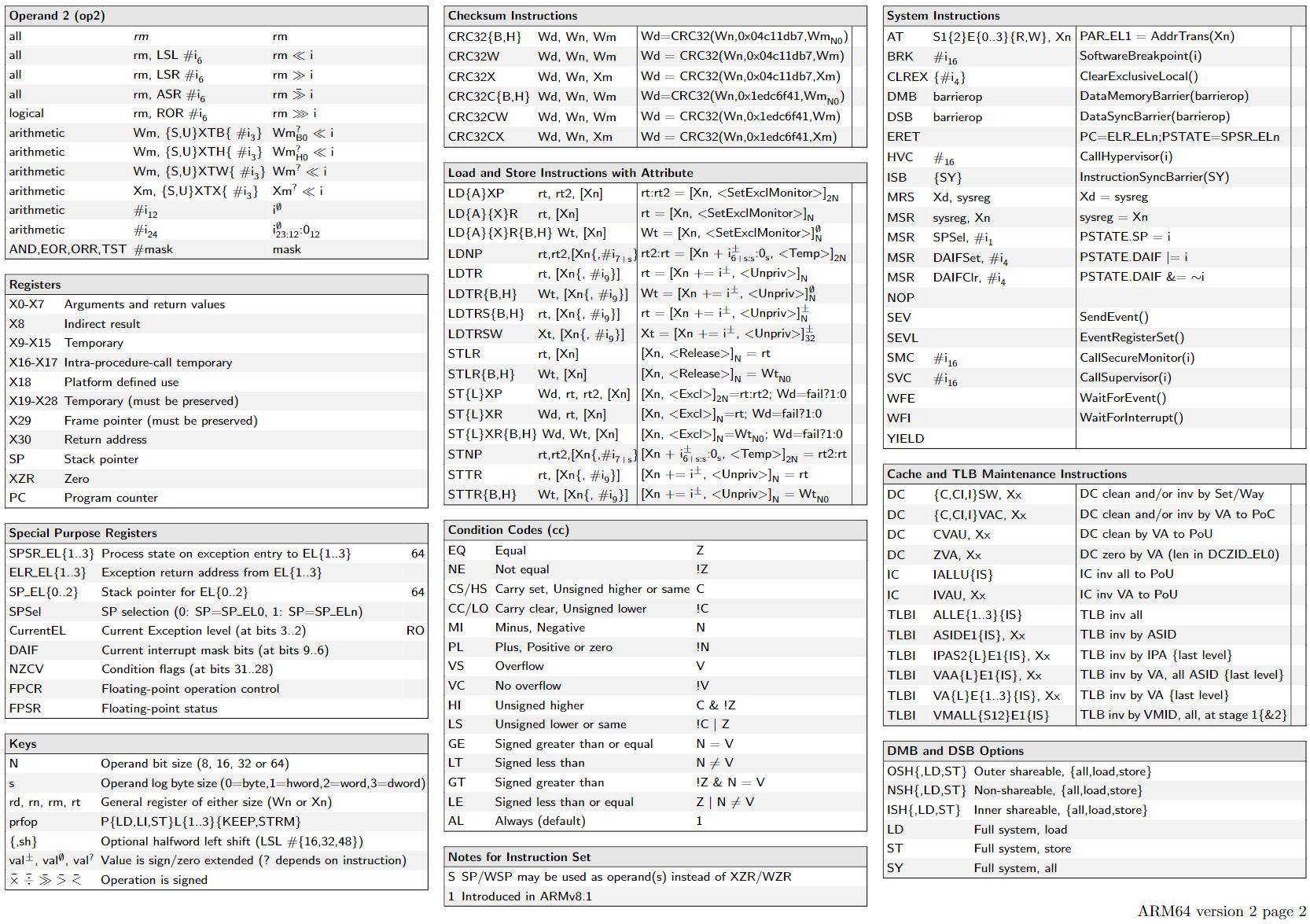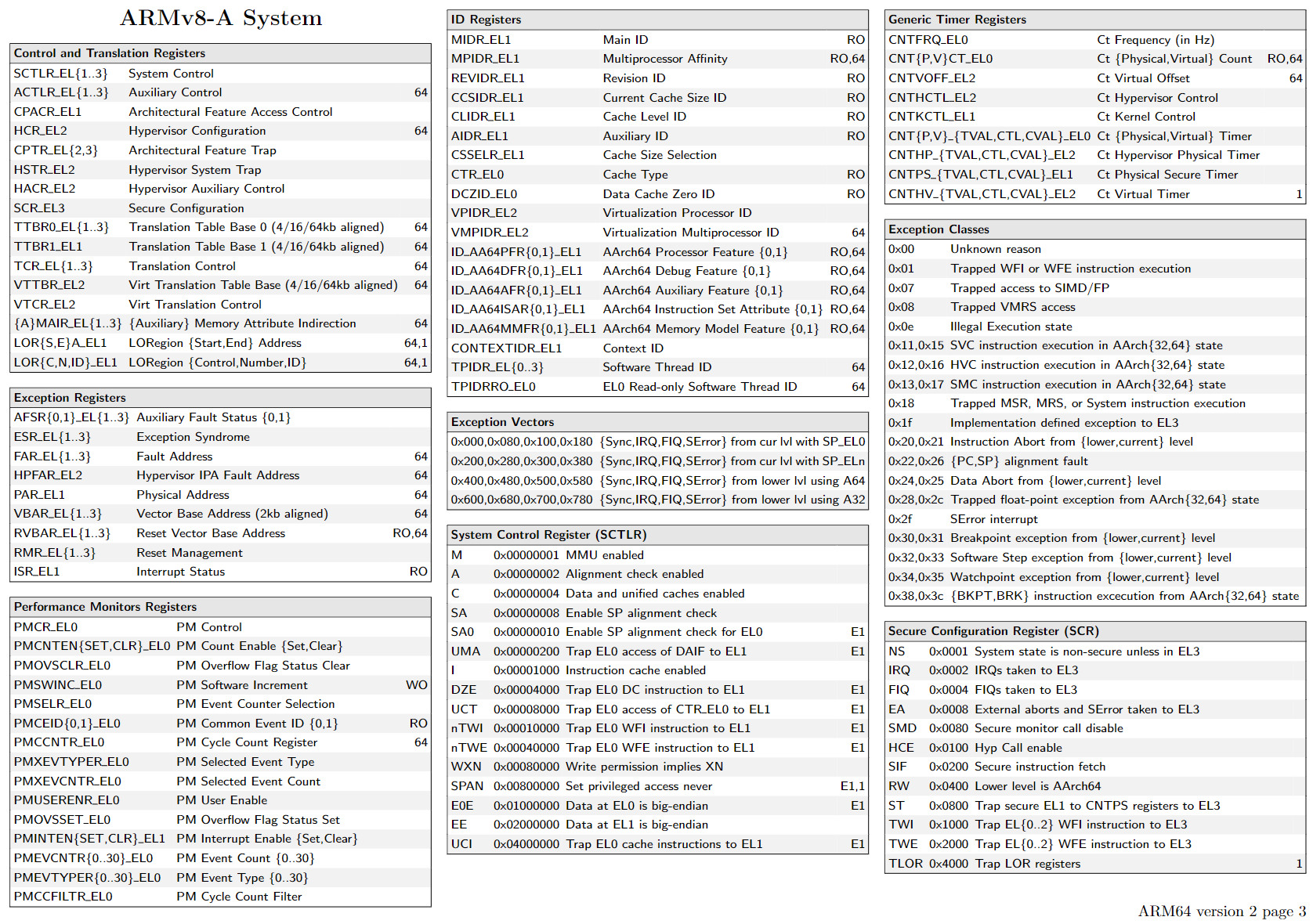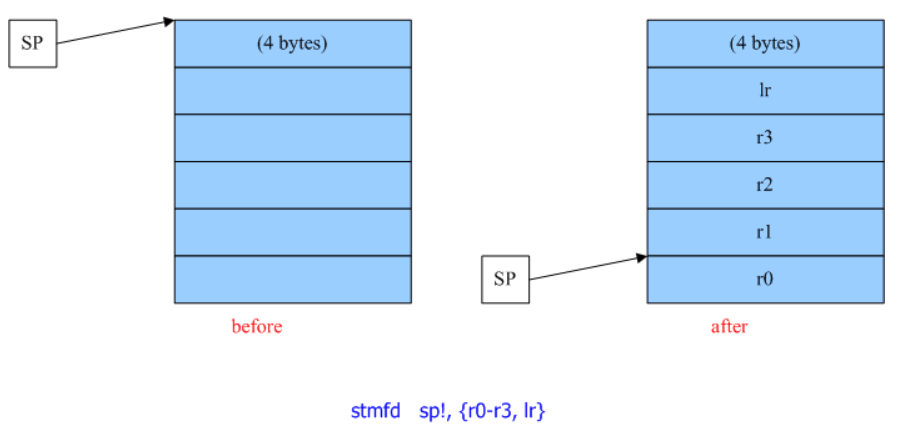Assembly Arm
关于X86 与 arm的寄存器的区别写在了arm那篇下
arm¶
https://developer.arm.com/documentation/dui0068/b/CIHEDHIF
Arm 的四种寻址方式¶
Aarch64¶
Arm A64 Instruction Set Architecture https://modexp.wordpress.com/2018/10/30/arm64-assembly/
直接阅读文档 Arm® A64 Instruction Set Architecture Armv8, for Armv8-A architecture profile最有效
指令后缀说明¶
read from ARMv8 Instruction Set Overview 4.2 Instruction Mnemonics
combine
指令速查¶
官网查找指令: https://developer.arm.com/architectures/instruction-sets/intrinsics
https://armconverter.com/?disasm&code=0786b04e
SIMD/vector¶
几乎每个指令都可以同时作用在不同寄存器和vector或者scalar上。比如add指令,并没有像X86一样设计vadd或者addps等单独 的指令,如果一定要区分,只能从寄存器是不是vector下手。
根据这个图,确实是有做向量操作的add,FADD是float-add的意思,ADDP是将相邻的寄存器相加放入目的寄存器的意思。不影响是标量scalar还是向量vector的操作。addv是将一个向量寄存器里的每个分量归约求和的意思,确实只能用在向量指令。

需要额外注意的是另外一种写法,位操作指令,不在乎寄存器形状shape
是同一个意思,但是不支持and v3.8h, v3.8h, v7.8h
DUP //Duplicate general-purpose register to vector.or Duplicate vector element to vector or scalar.
addp //Add Pair of elements (scalar). This instruction adds two vector elements in the source SIMD&FP register and writes
//the scalar result into the destination SIMD&FP register.
calculate¶
add
addp //Add Pair of elements (scalar). This instruction adds two vector elements in the source SIMD&FP register and writes the scalar result into the destination SIMD&FP register.
adds // Add , setting flags.
eor // Bitwise Exclusive OR
orr // Move (register) copies the value in a source register to the destination register. Alias of ORR.
Address¶
Branch¶
b.cond // branch condition eg. b.ne
bl //Branch with Link branches to a PC-relative offset, setting the register X30 to PC+4
//带链接的跳转。 首先将当前指令的下一条指令地址保存在LR寄存器,然后跳转的lable。通常用于调用子程序,可通过在子程序的尾部添加mov pc, lr 返回。
blr //Branch with Link to Register calls a subroutine at an address in a register, setting register X30 to PC+4.
cbnz //Compare and Branch on Nonzero compares the value in a register with zero, and conditionally branches to a label at a PC-relative offset if the comparison is not equal. It provides a hint that this is not a subroutine call or return. This instruction does not affect the condition flags.
tbnz // test and branch not zero
ret //Return from subroutine, branches unconditionally to an address in a register, with a hint that this is a subroutine return.
Load/Store¶
ldrb // b是byte的意思
ldar // LDAR Load-Acquire(申请锁) Register
STLR //Store-Release(释放锁) Register
ldp // load pair(two) register
stp // store pair(two) register
ldr(b/h/sb/sh/sw) // load register , sb/sh/sw is signed byte/half/word
str // store register
ldur // load register (unscaled) unscaled means that in the machine-code, the offset will not be encoded with a scaled offset like ldr uses. or offset is minus.
prfm // prefetch memory
Control/conditional¶
ccmp // comdition compare
CMEQ // Compare bitwise Equal (vector). This instruction compares each vector element from the frst source SIMD&FP register with the corresponding vector element from the second source SIMD&FP register
CSEL // If the condition is true, Conditional Select writes the value of the frst source register to the destination register. If the condition is false, it writes the value of the second source register to the destination register.
CSINC //Conditional Select Increment returns
CSINV //Conditional Select Invert returns
CSNEG //Conditional Select Negation returns
Logic&Move¶
ASRV //Arithmetic Shift Right Variable
lsl //logic shift left
orr //bitwise(逐位) or
eor //Bitwise Exclusive OR
TST/ANDS //Test bits (immediate), setting the condition flags and discarding the result. Alias of ANDS.
MOVZ //Move wide with zero moves an optionally-shifted 16-bit immediate value to a register
UBFM // Unigned Bitfield Move. This instruction is used by the aliases LSL (immediate), LSR (immediate), UBFIZ, UBFX, UXTB, and UXTH
BFM //Bitfield Move
BIC (shifted register) //Bitwise Bit Clear
CLZ // Count Leading Zeros counts the number of binary zero bits before the frst binary one bit in the value of the source register, and writes the result to the destination register.
REV, REV16, REVSH, and RBIT // below
REV //Reverse byte order in a word.
REV16 //Reverse byte order in each halfword independently.
REVSH //Reverse byte order in the bottom halfword, and sign extend to 32 bits.
RBIT //Reverse the bit order in a 32-bit word.
Modifier¶
system¶
dmb //data memory barrier
SVC //The SVC instruction causes an exception. This means that the processor mode changes to Supervisor,
ARM no push/pop¶
are aliases for
需要进一步的研究学习¶
暂无
遇到的问题¶
暂无
开题缘由、总结、反思、吐槽~~¶
参考文献¶
https://www.cs.virginia.edu/~evans/cs216/guides/x86.html
